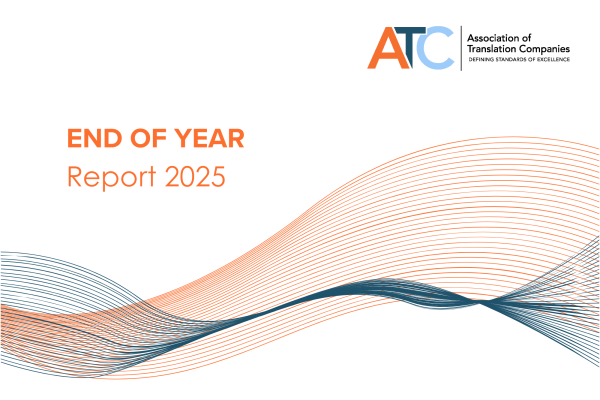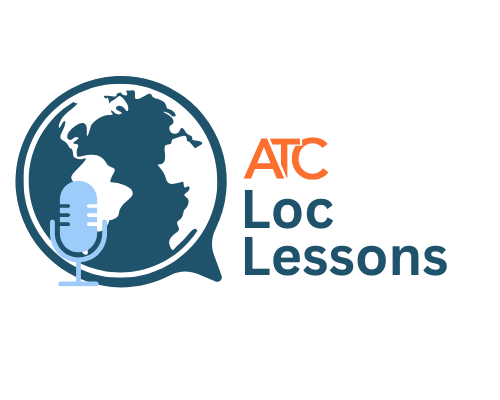In an industry undergoing huge disruption and transformation, it’s important that, as your trade association,…

The ATC’s Member of the Month in May 2024 is Sandberg, a specialist provider of Nordic and English translation services with an unparalleled view to the work of hundreds of language service companies from multinational MLVs to local SMEs.
We caught up with Sandberg’s Managing Director Anu Carnegie-Brown, to talk about where the language services industry is heading, how AI is – or is not – changing the landscape, and how vendor management remains a critical asset for any LSC.
The way the wind is blowing
Sandberg is best known as a specialist company providing translation services in the Nordic languages and English to language service company clients across the UK and the world, working with some of the biggest names in the industry and localising some of the planet’s best-known brands, but also collaborating with hundreds of SME LSCs.
Sandberg’s Managing Director Anu Carnegie-Brown and her team are in a privileged position to experience first-hand how the language service industry’s changes are reflecting on the procurement landscape. “There are clearly a lot of things afoot in the industry, but none of the developments seem to be very straightforward. It’s a challenge to try and predict where the wind is blowing,” says Anu.
“For many of our clients, business has clearly not been plain sailing in the past year, and of course the pressure on rates is constantly ramping up, especially with the larger MLVs who are at the forefront of the AI revolution. Lower word rates are not a problem per se, it all depends on what the rate is in compensation for. It makes sense to pay less per word for postediting than for translation, and even less for revision or review. But as we are now seeing a variety of linguistic input sources being introduced to the localisation process (TMs, MT, AI as well as the human), our industry’s word-based costing models seem to be taking on a life of their own. There is an increasing disconnect between what the human linguist is paid and the time they should be able to dedicate to their task.
There are so many industry conventions about pricing – that editing MT output is 50% faster than translating from scratch or that 100% matches can be checked in 10% of the time it takes to translate the same segment – and yet they are just agreements in the end. They are not precise science. We convert them to lower word rates and linguists in turn convert the word rates to time available for the work. The fact that the human is making fewer changes is then interpreted as constantly improving MT performance (because the edit distance shows fewer edits), or perfect TM quality (because there are no edits in the 100% matches), whereas the truth is that the linguist’s pay doesn’t allow enough time for them to make all the necessary edits. We end up with an undeservedly high opinion of the non-human linguistic assets because we believe that their output was ‘verified by a human’.”
So what about AI?
The feeling in the industry around AI is that as the immediate hype is dying down, it’s time to get to business and start implementing AI solutions, or risk being left behind. Does that notion hold water with a company who handles work from over 400 LSC clients on a regular basis?
“This is one of the most interesting aspects about AI adoption,” Anu muses. “Honestly, in the work that we do, we still haven’t seen a huge deal of AI-enabled workflows – neither from the large MLVs nor the small LSCs. So yes, everyone’s talking about it, but the ship definitely hasn’t sailed yet.”
“It’s true that we have seen an increase in AI training projects which are typically high-volume, low-cost work. And we have also witnessed a drop in the volume of traditional translation work, but since I have limited visibility to what’s happening in the localisation chain upstream from Sandberg, I can’t attribute it to AI alone. However, I have no doubt that enterprise clients are starting to move fast, looking to replace their time-consuming and costly language solutions with something more efficient and expansive, and looking at AI-enabled solutions to get there. And if you’re in on that conversation as a knowledgeable supplier, great. If not, it’s definitely a risk.”
The supply chain experts & humans in the loop
What AI is not replacing, however, is the continued need for expert human translators capable of turning their hands to a multitude of different linguistic tasks – and this is where Anu continues to see a strong business case for highly specialist LSCs such as Sandberg.
“At our level in the Client-MLV-SLV production chain, there is very little autonomy left for us to influence the technology or the workflows. But we do have a very strong business position as a provider of skilled, expert linguists in our core languages. Here at Sandberg, our unique selling point continues to be our large in-house team of Nordic translators, but alongside it, the efforts of our Vendor Management provide our key clients with the scalability of linguistic capacity that makes our services attractive to them. Whilst the buyers and MLVs tend to invest in technology, SLVs should utilise their proximity to the target language market with its culture and its people. Finding the humans for the loop continues to be one of the most critical aspects of the provision of language services, and there the companies with access to the best and the most versatile people will prevail,” Anu predicts.
Beyond pure translation, this vendor landscape is also developing, with LSCs moving outside of their normal remit of qualified and skilled translators to sourcing from an expanding field of potential vendors from specialist subject-matter reviewers to native-language youths for crowdsourcing projects.
And, according to Anu, this is the key to survival in an uncertain landscape: being the best and the most versatile in your niche, expanding your linguistic services and supplier pool, and fostering strong connections both within the company and outside it. For Anu, the current President of ELIA, whose Operations Manager Susan Hoare is an active member of the ATC’s Council, being in tune with the industry is a no-brainer.
Anu Carnegie-Brown was in conversation with ATC CEO Raisa McNab.



